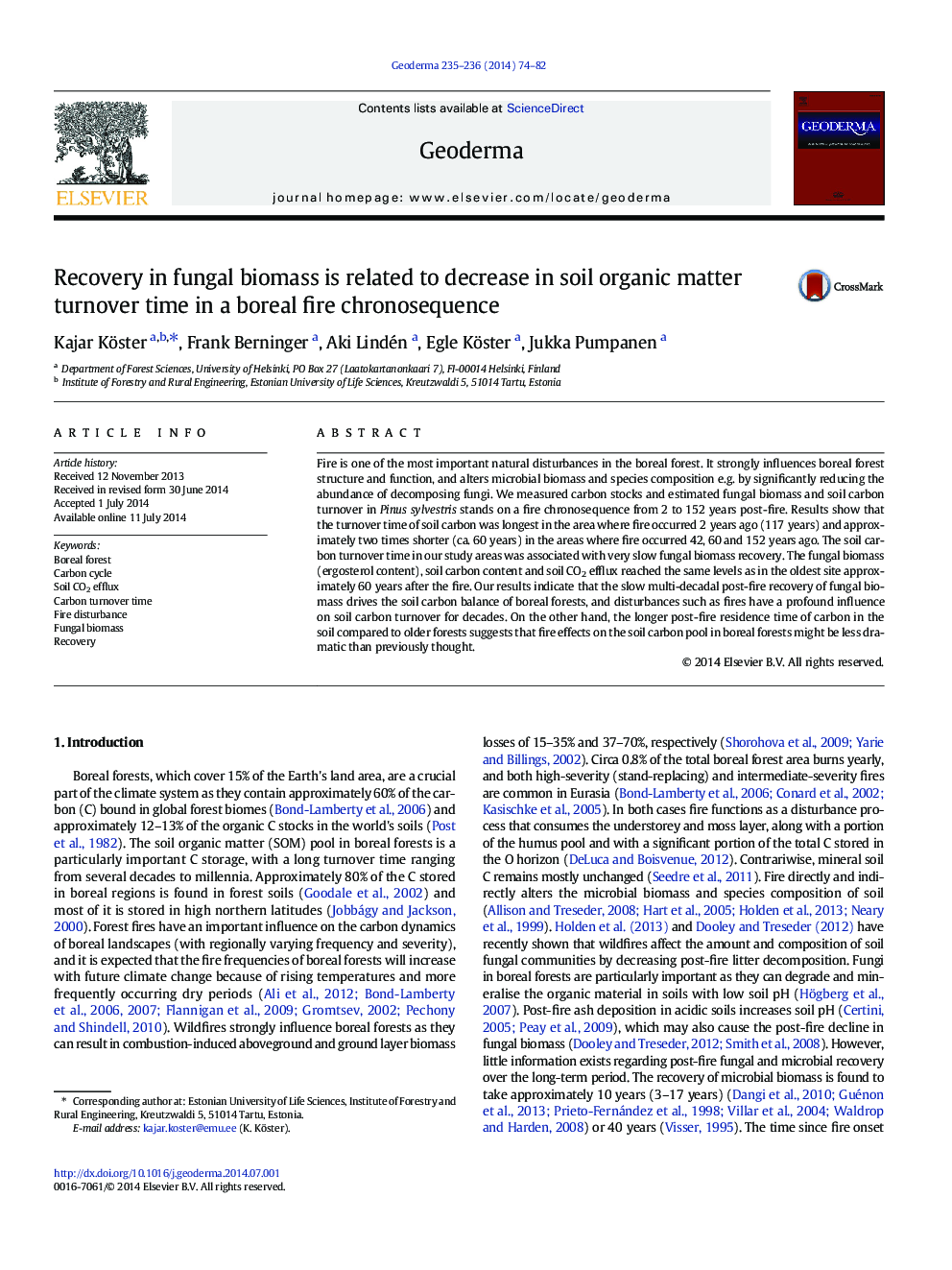| Article ID | Journal | Published Year | Pages | File Type |
|---|---|---|---|---|
| 4573306 | Geoderma | 2014 | 9 Pages |
Fire is one of the most important natural disturbances in the boreal forest. It strongly influences boreal forest structure and function, and alters microbial biomass and species composition e.g. by significantly reducing the abundance of decomposing fungi. We measured carbon stocks and estimated fungal biomass and soil carbon turnover in Pinus sylvestris stands on a fire chronosequence from 2 to 152 years post-fire. Results show that the turnover time of soil carbon was longest in the area where fire occurred 2 years ago (117 years) and approximately two times shorter (ca. 60 years) in the areas where fire occurred 42, 60 and 152 years ago. The soil carbon turnover time in our study areas was associated with very slow fungal biomass recovery. The fungal biomass (ergosterol content), soil carbon content and soil CO2 efflux reached the same levels as in the oldest site approximately 60 years after the fire. Our results indicate that the slow multi-decadal post-fire recovery of fungal biomass drives the soil carbon balance of boreal forests, and disturbances such as fires have a profound influence on soil carbon turnover for decades. On the other hand, the longer post-fire residence time of carbon in the soil compared to older forests suggests that fire effects on the soil carbon pool in boreal forests might be less dramatic than previously thought.
